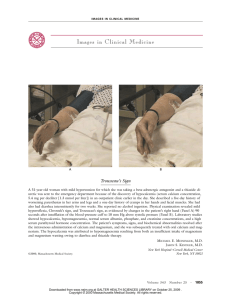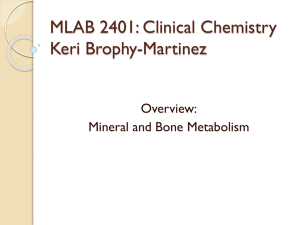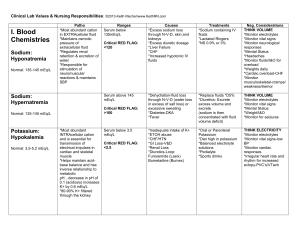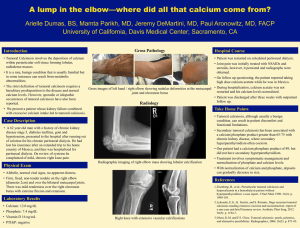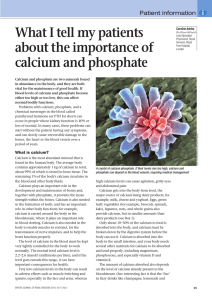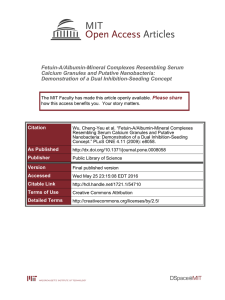File - the Drug Card Database
advertisement
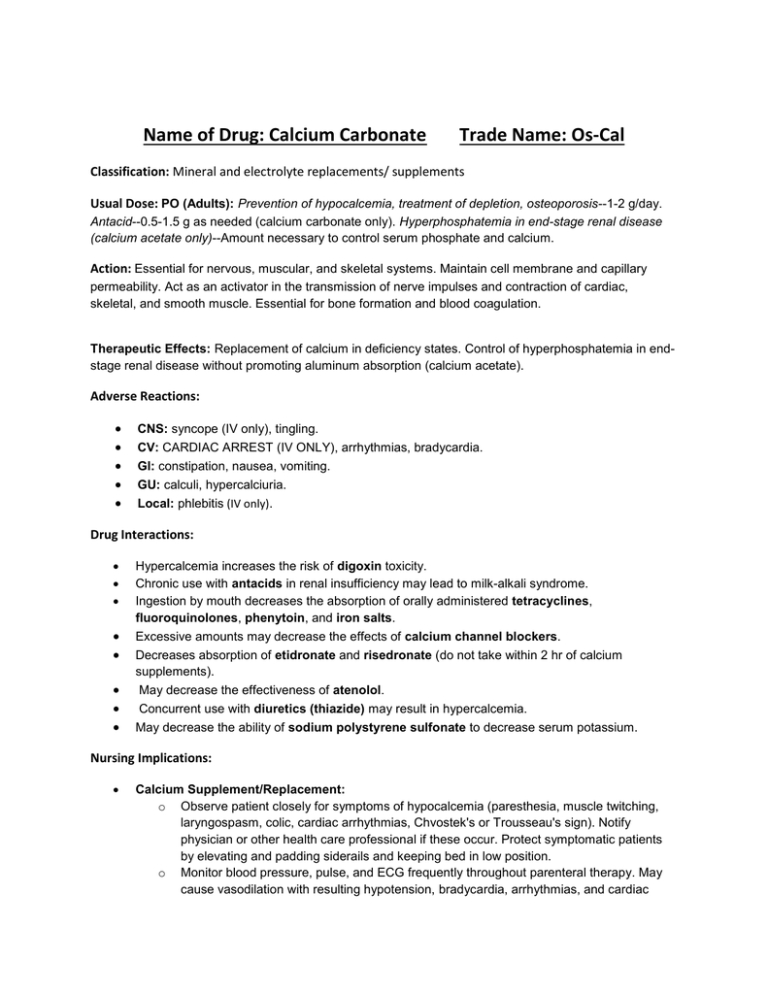
Name of Drug: Calcium Carbonate Trade Name: Os-Cal Classification: Mineral and electrolyte replacements/ supplements Usual Dose: PO (Adults): Prevention of hypocalcemia, treatment of depletion, osteoporosis--1-2 g/day. Antacid--0.5-1.5 g as needed (calcium carbonate only). Hyperphosphatemia in end-stage renal disease (calcium acetate only)--Amount necessary to control serum phosphate and calcium. Action: Essential for nervous, muscular, and skeletal systems. Maintain cell membrane and capillary permeability. Act as an activator in the transmission of nerve impulses and contraction of cardiac, skeletal, and smooth muscle. Essential for bone formation and blood coagulation. Therapeutic Effects: Replacement of calcium in deficiency states. Control of hyperphosphatemia in endstage renal disease without promoting aluminum absorption (calcium acetate). Adverse Reactions: CNS: syncope (IV only), tingling. CV: CARDIAC ARREST (IV ONLY), arrhythmias, bradycardia. GI: constipation, nausea, vomiting. GU: calculi, hypercalciuria. Local: phlebitis (IV only). Drug Interactions: Hypercalcemia increases the risk of digoxin toxicity. Chronic use with antacids in renal insufficiency may lead to milk-alkali syndrome. Ingestion by mouth decreases the absorption of orally administered tetracyclines, fluoroquinolones, phenytoin, and iron salts. Excessive amounts may decrease the effects of calcium channel blockers. Decreases absorption of etidronate and risedronate (do not take within 2 hr of calcium supplements). May decrease the effectiveness of atenolol. Concurrent use with diuretics (thiazide) may result in hypercalcemia. May decrease the ability of sodium polystyrene sulfonate to decrease serum potassium. Nursing Implications: Calcium Supplement/Replacement: o Observe patient closely for symptoms of hypocalcemia (paresthesia, muscle twitching, laryngospasm, colic, cardiac arrhythmias, Chvostek's or Trousseau's sign). Notify physician or other health care professional if these occur. Protect symptomatic patients by elevating and padding siderails and keeping bed in low position. o Monitor blood pressure, pulse, and ECG frequently throughout parenteral therapy. May cause vasodilation with resulting hypotension, bradycardia, arrhythmias, and cardiac arrest. Transient increases in blood pressure may occur during IV administration, especially in geriatric patients or in patients with hypertension. o Assess IV site for patency. Extravasation may cause cellulitis, necrosis, and sloughing. Monitor patient on digitalis glycosides for signs of toxicity. Antacid: o When used as an antacid, assess for heartburn, indigestion, and abdominal pain. Inspect abdomen; auscultate bowel sounds. Laboratory Implications: Monitor serum calcium or ionized calcium, chloride, sodium, potassium, magnesium, albumin, and parathyroid hormone (PTH) concentrations before and periodically during therapy for treatment of hypocalcemia. May cause decreased serum phosphate concentrations with excessive and prolonged use. When used to treat hyperphosphatemia in renal failure patients, monitor phosphate levels.
